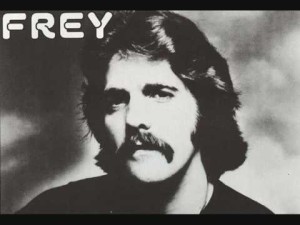 My latest MoneySense blog reveals some of my personal strategies for dealing with the bear market: How I’m preparing for Retirement in a bear market.
My latest MoneySense blog reveals some of my personal strategies for dealing with the bear market: How I’m preparing for Retirement in a bear market.
There may be a few ideas for anyone who, like myself, is in the “Retirement Risk Zone.” That’s the five years prior to and five years following your projected retirement date. If it’s 65, the traditional age, then the Risk Zone is between age 60 and 70. Based on the Hub’s demographic user patterns, a lot of people are in that category (although we actually have lots of millennial and Gen X traffic too on both sides of the border).
Towards the end of the blog, I talk about portfolio hedging. I have to credit my fee-for-service financial advisor for most of these concepts. He didn’t want to be named for the MoneySense blog but he is listed in the Hub’s “Guidance” section elsewhere in this site.
It took me awhile to accept that hedging — that is, using options or selling short certain ETFs representing the major indices — is as much a risk reduction strategy as it is a “risky” strategy.
Hedging means trading off some upside for downside protection
The best way I can describe it is that you’re willing to give up some upside in return for protecting the downside. In this respect, it’s not unlike asset allocation or a classic balanced fund. Naturally, a portfolio half in bonds and cash should be less volatile than one 100% in stocks. You’d expect the aggressive portfolio to have the highest returns in a continuing bull market in equities and if you were in a balanced fund would accept the lower returns that let you sleep soundly at night.
To my mind, hedging is similar. In the MoneySense blog I describe a hypothetical situation (close to my own) in which asset allocation across both registered and non-registered portfolios is roughly 50/50. Ideally, registered plans are mostly in fixed income (and my case some US dividend-paying stocks), and non-registered plans are mostly in stocks, especially Canadian stocks.
But when you’re in “The Zone,” you hardly welcome watching half your portfolio sink. Yes, we’re already down 20% and are firmly in correction or bear mode in most global markets. It could be that now is the proverbial buying opportunity, and that’s probably true for younger investors who have plenty of time on their side.
The Long Run eventually runs out

Not so we aging baby boomers. The deaths the past week of David Bowie at 69 and of the Eagles’ Glenn Frey at 67 should be sufficient reminder (“memento mori“) that we are all mortal. The concept of stocks for the long run is certainly a good foundation for young people and the middle-aged to build growth portfolios but as Keynes also reminded us, “In the long run we’re dead.”
Here at the Hub our slogan is to achieve financial independence “while you’re still young enough to enjoy it.” It’s hard to really enjoy Findependence when you’re worried about the stock market crashing 50% or more, as it did in 2008.
But as my adviser told me at the time — as he sailed through the financial crisis intact via his hedging strategies — you don’t need to stand helplessly like a deer blinded by headlights as markets go south. If you care as much now about capital preservation than growth, then it follows that you’re willing to trade off some future upside for a lower downside. Asset allocation may get you there and one of the regular contributors to the Hub is a firm believer in retirees relying on cash flow from high-quality individual stocks.
Partial hedge is still net long equities
Currently “we” are only a sixth to a third hedged so we’re still happy if markets recover. As the MoneySense blog warns, if you do start to hedge, it will be inevitable that you may get whipsawed. So if you choose to initiate a hedge by shorting ETFs covering the TSX or the S&P500 or EAFE ETFs, realize that if markets start to rise, you will be losing money on the the sell side of the hedge. (But if you’re net long you’re still “happy”).
Conversely, if they sink further, you will be glad you purchased the “insurance,” as those positions rise even as the indexes sink further.
No guarantees either way but when in investing was there ever a guarantee? And as the other blog notes, you don’t want to try this without the guidance of a good financial planner or investment adviser who is thoroughly proficient at risk management, options and hedging.

